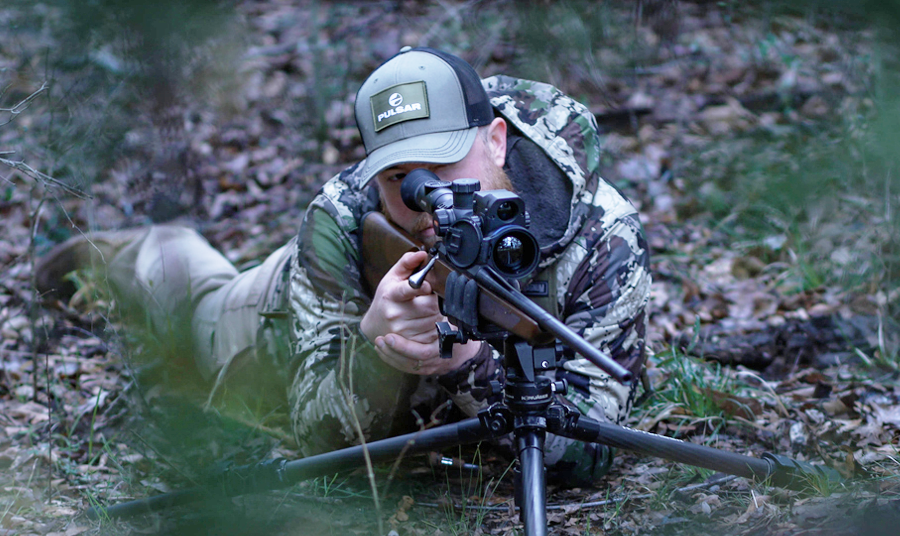First time users of thermal optics may find themselves discouraged at the range when they discover the traditional red-and-white paper targets they’re used to for zeroing appear instead as plain black or white squares through their scope. Since a thermal scope works through infrared light, they can’t read the ink printed on paper and standard targets cannot be used for zeroing. Instead, heat-based targets are used in place, but otherwise the same rules of zeroing apply. Here are some of the different techniques you can try in your backyard or at the range:
High Contrast Targets
The color black absorbs heat. Therefore, making a high contrast target with a white backing and target zones made of black duct tape is one of the cheapest and easiest ways to set up a target for thermal. However, it may not be the most efficient way, since any shots that land in the white zones of your target won’t be seen clearly through your thermal optic.
Hot Foil Tape
If your shots aren’t hitting paper, it may be prudent to purchase a large, completely black target board made of foam or cardstock and stick self-adhesive foil tape on it for aiming points. Since metal foil absorbs sunlight much better than plain black paper, the foil tape, once left under the heat of the sun, should appear either very bright or very dark through your optic, depending on your palette choice. Any shots fired through the warm tape or board should leave a distinctive hole which can be used for zeroing.
Frozen Screws
While this method may be tedious and time consuming, it leaves clear and distinct marks on your target which are perfect for zeroing, rather than barely visible bullet holes. Under the heat of the sun, cold objects will appear as very dark or very bright depending on your palette settings. You will need several short screws (approximately the same diameter as your ammo if you can get them) on ice in a cooler and a paper target with stiff backing made of cardstock or museum board, strong enough to support the weight of a small screw without folding. Fire a group of two or three shots in your board and fill the holes with those frozen screws. Looking through thermal, you should have a good view of your shot placement. After this, it’s simply a matter of adjusting your windage and elevation towards the distinct dots on your target.
Hand Warmers
Lining up an array of hand warmers on a board to act as a target is both relatively cheap and hassle-free. Perfect for cold weather or zeroing at night, hand warmers light up the night in infrared just like cold objects darken during the day. Simply tape some hand warmers to cover a flat surface and fire away. The disadvantage of this setup is the hand warmers will leak once shot, and bullet holes may prove to be difficult to find.
Pulsar Thermal targets
For the scrupulous shooter who doesn’t want a DIY solution, Pulsar offers thermal zeroing targets for sale, purpose-made for zeroing thermal optics. Consisting of paper targets and pads which heat up when exposed to oxygen, this high-tech thermal target set is guaranteed to be the most reliable option for zeroing your thermal scope. Best for low temperatures, Pulsar’s thermal zeroing targets glow hot for anywhere from 10 – 20 minutes, so they should not be opened until they are ready for use.

What about you? What is your favorite way to zero your thermal device? Tell us in the comments below.





1 comment
Use a foam board with black electrical tape for the X. In warm weather you can clearly see the holes in the board. In cold or freezing weather use fired shell casings placed in the holes which absorb the cool air.